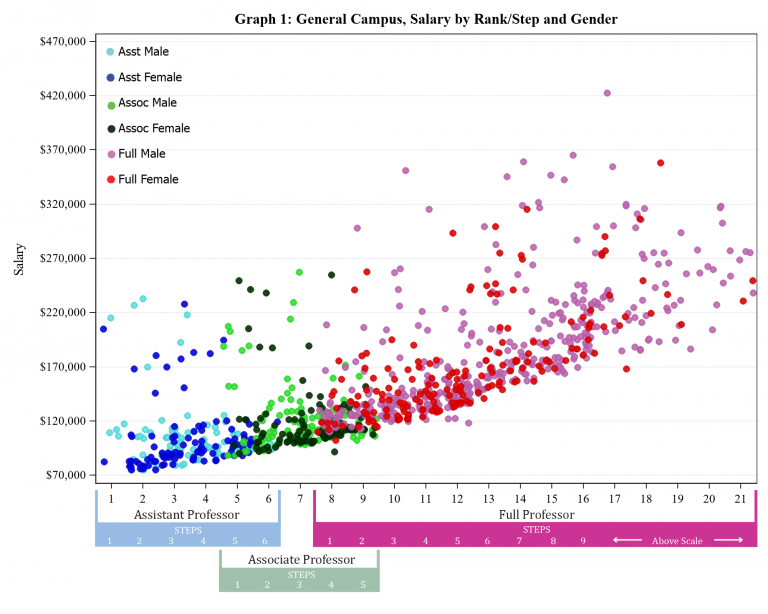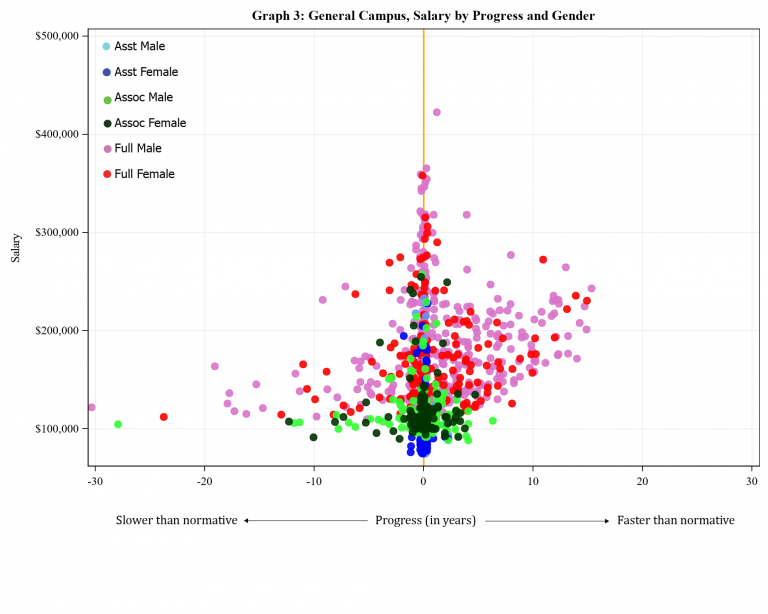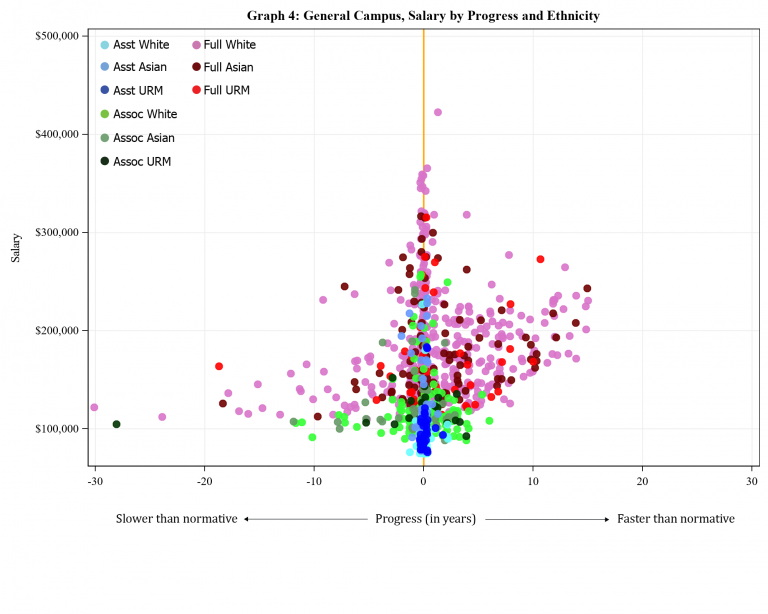Ladder Rank Salary Data
The salary data for all Ladder Rank Faculty on the General Campus are plotted below.
Multiple Linear Regression Analysis
When these data are evaluated with the simplest model that includes only demographic variables the result indicate that, compared to their colleagues who are male, women earn salaries that are 11.5% lower, Asian faculty 2.8% lower, and URM faculty 11% lower. However, only 4% of the salary variation is explained by the model (Table 1). As additional explanatory variables are added to the model, salary differences diminish to less than 1% between women, Asian, and URMs when compared to white men; and the percentage of salary variation explained by the model increases to 91%. This indicates that at the campus level, there is little evidence of salary inequity associated with gender and/or ethnicity.

Progression Analysis
The progression data for all General Campus Ladder Rank Faculty, are plotted below. Normative progression is defined in the Progression Matrix.
Progress Rate Analysis
There has been debate on whether rank should be included in predicting salary. In previous studies, rank is generally included in predictive modeling unless there is evidence of bias against one group progressing through the ranks. Cursory t-tests on the rate of progression indicate that there is no significant difference between White men and Asian or URM faculty. However, women do progress at a slightly slower rate than white men. Further multivariate regression analyses were conducted adjusting for experience, discipline, and initial rank. These analyses showed no significant differences between White men and Women, Asian, or URM faculty. This indicates that it is appropriate to include rank in the regression equations predicting salary. Normative progression is defined in the Progression Matrix.

School Level
Analyses at the school level yield a range of results. When controlling for experience, department within the school, and rank, salary differences are, for the most part, similar to that of the campus as a whole, but there are some exceptions.
General Campus Summary
In summary, we found no evidence for systemic inequity in salary associated with gender and/or ethnicity among faculty at the campus level. However this study does highlight several areas for further evaluation including understanding factors contributing to low representation of women and minority faculty in the higher ranks and steps. Progression rates through the ranks should also be further examined.



